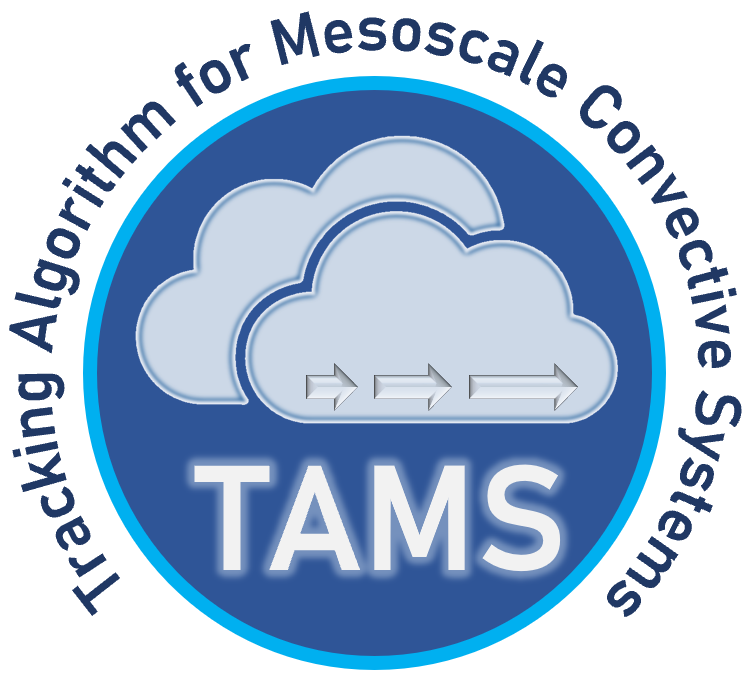TAMS

TAMS (Tracking Algorithm for Mesoscale Convective Systems) is an MCS tracker and classifier. TAMS was originally developed for tracking and analyzing MCSs associated with African easterly waves (AEWs). The currently developed TAMS is a scientific Python package. TAMS uses the GeoPandas dataframe data structure to store polygon shapes of the elements to be tracked. It is a grid-independent MCS identifier and tracker, and as such, it can be applied for both simulated and observed MCSs. It is available to be installed via pip or conda/mamba.
pip install tams
conda install -c conda-forge tams
TAMS has four main steps:
- Identify – Through xarray and Shapely/GeoPandas, cloud elements (CEs) that are MCS candidates via default criteria are identified through temperature thresholds (if using satellite data) or cloud top temperature proxy (model data)
- Tracking – Overlap method and optional cloud projection in the x direction
- Classification – Based on default criteria considering shape, size, and duration, each MCS is classified into one of four possible categories
- Assignment of rainfall (or variable of choice) – Through the use of the helper function
tams.data_in_contours, a variable of choice can be added to each CE in order to study the MCS evolution across different statistical analysis and atmospheric variables
Currently, Identify, Assignment, and some post-processing can be done in parallel.
Settings
Users can choose outer and core thresholds of CEs for object detection, optionally define zonal projection velocity, and choose the % overlap threshold for time matching.
Helper functions and utilities
Users can use the eccentricity calculation function as a measure of the MCS shape. Other functions include plotting MCS tracks, loading sample MSG ch9 satellite data, and MPAS data. Jupyter Notebooks and examples are available for calculating brightness temperature from EUMETSAT, MPAS Cloud Top Temperature from OLR, and others.
The documentation is available at https://tams.readthedocs.io.
MCSMIP
Information about how TAMS was run for MCSMIP, including scripts, can be found here.
References
Kelly M. Núñez Ocasio, Jenni L. Evans, and George S. Young. Tracking Mesoscale Convective Systems that are Potential Candidates for Tropical Cyclogenesis. Monthly Weather Review, 148(2):655 – 669, Feb 2020. doi:10.1175/MWR-D-19-0070.1.
Kelly M. Núñez Ocasio, Jenni L. Evans, and George S. Young. A Wave-Relative Framework Analysis of AEW–MCS Interactions Leading to Tropical Cyclogenesis. Monthly Weather Review, 148(11):4657 – 4671, Nov 2020. doi:10.1175/MWR-D-20-0152.1.
Kelly M. Núñez Ocasio and Zachary L. Moon. TAMS: a tracking, classifying, and variable-assigning algorithm for mesoscale convective systems in simulated and satellite-derived datasets. Geoscientific Model Development, 17(15):6035–6049, Aug 2024. doi:10.5194/gmd-17-6035-2024.